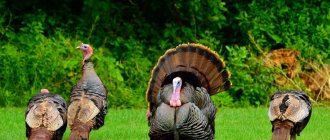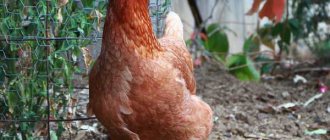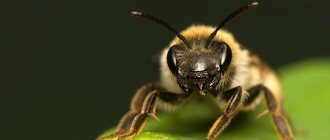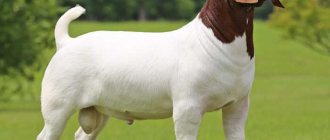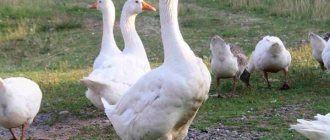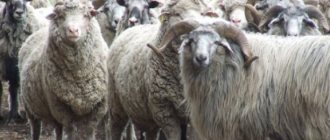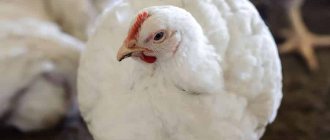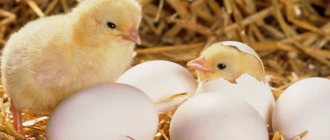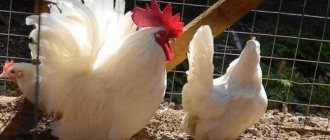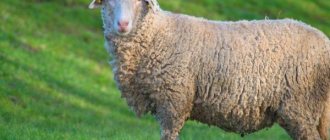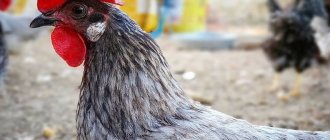Home » Articles about turkeys » Slate turkeys
In addition to productive breeds, breeders have also bred decorative ones - slate turkeys belong to this category. They do not give much weight gain, but they have an interesting color. They are bred mainly to decorate the farmstead and carry out breeding work.
Description
In 1874, American breeders carried out work on the fusion of genotypes of birds with white and black feathers. This is how slate turkeys appeared. The resulting chicks had a plumage color similar to a shade of blue-gray slate. Such a stone used to be called slate - hence the name of the breed.
Blue (lavender, lilac) slate turkeys have received official status. They did not arouse any particular interest - the economic crisis that occurred in the United States did not contribute to the development of the aesthetic direction of poultry farming. Nowadays, the slate breed of turkeys is gradually gaining popularity - they are raised in small quantities on private farmsteads and in zoos, and are used as a gene pool in scientific genetic research and breeding work.
Turkey breeds
It is interesting that these curious birds were once not found on our continent.
They were brought by the Spaniards from America in the 14th century. Europeans immediately tasted the tender dietary meat and since then turkey has become a traditional dish. The muscles of these birds consist of highly digestible proteins. Just like chicken, it is recommended for weakened or sick people. It is well tolerated by those who suffer from arthritis or urolithiasis. Compared to chicken, it contains more calcium, which is beneficial for a growing body and therefore especially suitable for children.
From the very first days of breeding, the selection of the most interesting individuals from an economic point of view was carried out, and in the 19th century, selection became targeted. There is currently a wide variety of turkey breeds. Turkey breeds for home breeding and industrial breeding differ from each other primarily in weight and secondarily in color. Additionally, there are a couple more important parameters - the ratio of poultry weight to meat yield and the time it takes to gain optimal weight for slaughter.
Characteristics
The bird is classified as light crosses. The American Standard defines the following characteristics of the blue slate turkey:
- lush plumage, giving volume to the body;
- the skin has a grayish tint (this characteristic spoils the presentation of the carcass);
- lavender, blue, ash-blue color - the presence of white and black inclusions on the tail feathers is allowed, the feathers on the back are slightly darker than on the chest;
- small head, light beak, dark eyes;
- males have a pink growth on the head, the neck is bare, at 10 weeks skin outgrowths (corals) are formed;
- the metatarsals have a pinkish tint.
The weight of adult males usually does not exceed 10-10.5 kg, females - 6-6.3 kg. The weight of daily turkey poults is 50 g.
Turkeys have average egg production. The weight of 1 egg is 75 g. The shell is creamy. Birds reach sexual maturity at 8-9 months. When creating a family, there should be no more than 8 females per 1 male. Out of 20 turkey poults, only 8-10 are. completely take over their parents' characteristics.
Since this is a cross and not a breed, a split in characteristics occurs - approximately half of the brood will have black, white, and motley plumage.
According to the description, slate turkeys are resistant to stress and easily get used to new conditions. They are non-aggressive and unpretentious. Turkeys become good brood hens - you can lay 17-20 eggs. The diameter of the nest is about 60 cm, the height of the sides does not exceed 15 cm. If there are a large number of eggs, it is advisable to use an incubator to produce offspring.
Bronze North Caucasian
The credit for developing this “line” belongs to the breeders of the Stavropol Territory. For a long time, the main breeding area for such turkeys was the Central Asian republics. They are still in demand due to their rapid growth and weight gain, survival rate and undemanding diet.
After the first month, grown chickens weigh 4 kg, growing to 12-15 kg and 8-9 kg (for males and females) by slaughter age. The carcasses are rich in white meat (25% of this muscle is in the thoracic region).
The appearance of this species is specific - with an elongated, long-legged body with a massive chest. The appearance of the “roosters” is very impressive, thanks to the combination of black and brown feathers with a golden-bronze tint and a fan-shaped tail. The feathers of the “hens” are less striking and pockmarked.
Breeding
Slate blue turkeys are used in breeding, crossing with more productive breeds. The birds are banded, assigned a number, and entries are made in a diary. The resulting individuals often have plumage other than blue, but become carriers of the gene - it will manifest itself in future generations.
You can also get a blue-gray color yourself by crossing white and black birds. Some of the offspring will receive a beautiful feather color. It is these individuals that are used for further breeding. It is important to take into account that there should be no family ties between the individuals used in selection.
Chick development
There are signs of disease that appear in chicks. The fact is that the slate breed is a kind of hybrid, and with further crossing, the offspring may not be in enviable health. Therefore, it is important to keep an eye on the birds.
It is worth paying attention, for example, if the chick cannot get up from its back. In a healthy bird, the muscular apparatus of the back is sufficiently developed for this manipulation, and it will not be difficult for it to stand on its legs. If the chick fails to do this, it should be culled. Over time, it will not grow into a healthy bird and it will simply die.
Another warning sign is when young turkeys fall on their feet. Some people advise wiping their paws with alcohol, but this measure is pointless. The fact is that falling on your feet is associated with insufficient development of the musculoskeletal system. This disease can be caused by poor nutrition of the mother when hatching chicks or further nutrition of young individuals.
The defect can also be inherited from the parent. Further breeding of chicks with a defect is not recommended; they must be culled.
YouTube responded with an error: The request cannot be completed because you have exceeded your quota.
Bird care
There are no special requirements for keeping slate turkeys - they are provided with standard conditions. In a poultry house per 1 sq. m accommodate no more than 2 individuals. If it is necessary to maintain the purity of the blood, females are allocated a separate pen, males are kept separately.
The room temperature is maintained at about +18°C. Optimal humidity is 60%. There should be no drafts, but high-quality air exchange must be ensured. Perches are located at a height of 0.7-1.5 m in several tiers. Containers with ash and sand for dry baths (1:1) are installed in the room.
In the warm season, long walking is organized. In winter, the bird is allowed to walk at a temperature not lower than -15°C. If the winter is snowy, then the area is covered with straw or wood shavings.
Reproduction of turkeys
Turkeys lay eggs in the spring and winter, laying an average of 50 or more eggs within 2.5-3 months. The chicks are incubated for 28 days. Females make excellent hens; they never abandon their nests. They are often used on goose or duck nests. The turkey very carefully looks after its brood - it warms the chicks, takes care of their food and jealously protects them from dangers.
For a turkey to be a good hen, she must hatch her chicks herself. The adopted ones almost always get pecked. Experienced business owners advise placing turkey chicks with a turkey at the end of daylight hours, after allowing her to sit on the eggs for a couple of days to satisfy the hen's instinct.
Diet
In the summer, when the birds are released for walking, forbs become the basis of the diet. In the evening they are fed a grain mixture, which includes wheat, corn, barley, oats without films, peas, millet, and legumes. Be sure to include chalk, feed yeast, a small amount of table salt, meat and bone and fish meal, and bran into the diet. In winter, vegetables (beets, carrots, pumpkin, cabbage, etc.) and herbal flour become sources of vitamins. A balanced diet serves as a prevention of vitamin deficiency, helps maintain the quality of plumage, and helps avoid pecking.
Moscow bronze
Bred in Russian breeding grounds, it attracts owners of private farms and poultry farms with good survival results and accelerated growth, adapting well to being both on range and in cages.
“Moscow Bronzes” are used for meat when they reach 5 months, growing to the standard average weight group - 19 kg and 11 kg for turkeys and turkey hens, respectively. The productivity of each unit is 2 eggs per day, a total of 80-90 eggs.
Among other breeds, this one is distinguished by its unusual color - a mixture of rich brown and light shades with a pearlescent tint. However, brownish skin and feather stumps impair the commercial quality of the finished product.
Diseases
According to the description of the breed, slate turkeys have good immunity, but if the conditions of detention are violated, problems can still arise. One of them is hypovitaminosis. It develops against the background of a deficiency of vitamins A, E, D. Symptoms: dull plumage, stool disorders, inflammation of the cloaca. When treating hypovitaminosis, birds are given the drugs Chiktonik and Trivit.
If grain predominates in the bird’s diet and the supply of dry food is not controlled, then the crop may become blocked - the problem can only be solved surgically. Prevention is a responsible approach to feeding, choosing high-quality feed.
The appearance of worms is possible - most often, infection occurs through the soil during free grazing or through poorly cleaned equipment. Another parasitic disease dangerous for turkeys is histomoniasis. Of the infectious diseases, the most dangerous are pseudoplague, smallpox, and mycoplasmosis.
Methods for determining sex in turkey poults
There are three methods for determining the sex of babies from the first days of life that can be used in the home: “folk”, Japanese and American.
"Folk" method
This method is not reliable and is used only by experienced farmers who have raised more than one generation of turkeys.
Its essence lies in the analysis of the external data of the chicks:
- assessment of size and weight - “boys” are usually larger and heavier than “girls”;
- inspection of wing feathers - males have even feathers, while females have feathers of different sizes;
- behavior analysis - small turkeys try to stay in a group, males, on the contrary, prefer solitude. Some of them walk from the first days with their lowered wings spread out. Some individuals can move in circles, which is typical of the behavior of an adult bird.
Even when analyzing all indicators, this method does not guarantee accuracy. For example, judging babies by size is quite questionable. The smallest turkey chick can subsequently grow into a quite decent turkey, and large turkeys can grow into miniature turkeys. Almost every poultry farmer has had such situations and usually they do not depend on the conditions of keeping and feeding. This feature is found in any poultry.
Analysis of the length and location of flight feathers is considered quite reliable and is even used in large farms. However, there is an error and it must be taken into account. In addition, it is very difficult for an inexperienced farmer to examine the tiny feathers of individual babies at one day of age. And by two weeks these differences are already “erased.”
Most often, kids of the same age behave the same way.
The specifics of behavior are not always clearly visible in the first day after hatching. But poultry farmers have noticed that more pronounced differences in the early stages appear in some breeds, for example, “White Broad-breasted”, “Hybrid Converter” and various crosses of heavy subtypes.
Japanese way
The industrial method, proposed by Japanese experts, is used by farmers to accurately determine the sex of turkeys, starting from one day of age. The method requires accuracy and some skill. First of all, you need to take care of hygiene. Hands should be clean, nails should be cut short and filed. It is recommended to use disposable gloves to avoid injury to the bird and minimize the risk of infection.
The chick is carefully taken in the left hand (for right-handed people) with its tummy up and fixed in the palm of the hand with the thumb and index finger. With the other hand, carefully wipe the cloaca with a clean napkin. You can use non-woven material, a cotton pad or soft toilet paper.
The cloaca is carefully opened with your fingers, pushing it apart
In good light, a couple of small round formations can be observed on males. In females, the cloaca is looser and consists of two interconnected folds.
The color of the cloaca in males is bright red, in females it is pale.
The babies are examined no earlier than 6 hours after hatching. Extreme caution must be used when using this method. It is important to eliminate the risk of spreading possible infections. Therefore, it is recommended to use an individual napkin for each chick.
At first, they are limited only to visual inspection, that is, they do not touch the tissues inside the cloaca. Having gained experience, for a more reliable diagnosis, you can try palpation of the genitals in individuals whose gender is difficult to determine by external signs.
Some experts recommend gently pressing on the chick's tummy before the examination to empty the intestines of feces. The advice is useful, but there is a risk of additional injury to babies. Therefore, you can use it only if you have experience in such manipulations.
American method
One of the most accurate methods for determining the sex of turkey poults at an early age was proposed by American farmers. They noticed that the litter of males and females has significant differences due to the structural features of the cloaca.
The difference in the litter of turkeys (pictured left) and female turkeys (right) is noticeable already at the initial stage
Female stools are frequent and loose. In males they are sparse, denser, usually shaped like the English letter “j”.
This method, despite its unusual nature, is becoming increasingly popular among poultry farmers. But in the early stages (before the babies reach 2 weeks of age), it is recommended to use it in conjunction with all the “folk” options for sorting chicks by gender.
BYuT 8 (BUT
British United Turkeys' heavy breed of turkey, BUT 8, dominates the European poultry market. This brand is a subsidiary of financial giant Aviagen Turkeys Limited. The breed exhibits growth rates unparalleled in the world and is descended from another heavy cross, BIG 6. It is believed that another turkey, the Hybrid Euro FP (Hybrid or Hybrid), which was developed for the European market, may well be an alternative to BYuT 8.
Having compared Hybrid Euro FP and BYuT 8 for productivity, slaughter and meat quality, European poultry researchers came to certain conclusions about the advantage of one of the breeds.
An experiment was conducted that included 144 turkeys and 288 turkeys of each breed. Birds were housed in a windowless facility and fed a 6-phase diet program with nutrients meeting BUT 8 recommendations. Efficiency data was recorded at the end of each feeding phase, and slaughter performance and meat quality characteristics were recorded on day 112 for turkeys, days 133 and 147 for turkeys.
It turned out that BUT 8 turkeys and turkeys showed a higher live weight before slaughter than Hybrid Euro. There was no significant difference in feed conversion between male breeds, while BUT females showed a significantly better conversion ratio than Hybrid females. The differences in meat yield of the two compared breeds turned out to be quite small, but Hybrid turkeys showed a higher yield of breast meat than BUT at 147 days of life. There were no significant differences in meat quality between breeds (pH, taste and texture of breast meat were compared), and the values obtained were within the normal range.
It can be concluded that Hybrid Euro FP turkeys have not yet reached BUT 8 performance level and the study conducted did not find any benefit in terms of carcass and meat quality for the Hybrid Euro FP breed.
Differences from other species
All selected breeds included in the list of big crosses are distinguished by rapid body weight gain and maximum weight gain. Big-6 and Big-8 belong to the broad-breasted direction of selection, but the first option is considered predominantly meat, while the second can be called meat-egg, females demonstrate egg production of up to 150 pcs. for half a year.
Big 9s differ from these two species in their average weight gain. A heavy cross of this type grows up to 21.75 kg. It is worth noting that all three variants of domestic broiler poultry were bred by the British company British United Turkeys Limited and have obvious common characteristics. The main difference between the Big 6 cross and other types is the maximum intensity of body weight gain. If you need the maximum meat yield, you should choose only this breed.
Advantages and disadvantages
Among the obvious advantages of the Big-6 turkey cross are:
- status of the largest meat producer;
- optimal ratio of growing costs and volumes of product obtained;
- high-quality feather cover and down, which can be used in industrial production;
- good egg production, much above average;
- slaughter yield is about 80%.
There are also some downsides. The disadvantages include the bird's quarrelsome nature, which can be quite difficult to cope with as it grows older. In addition, young animals are extremely sensitive to dampness, need a warm room for growth, protected from drafts, and require immunoprophylaxis.
